The week at a glance
- Pacific Swift flies south past Spurn
- Collared Flycatcher, Roller and River Warbler on Fair Isle
- 2013's fifth Collared Flycatcher in northwest Scotland
- Little Bitterns breeding again on the Avalon Marshes
- Black-headed Bunting on the Isle of Wight
- Caspian Tern tours Hampshire and Dorset
The week's headline was actually one that many had predicted in late May. Plenty of keen (hopeful!) birders had been proclaiming that Bawdsey's convincing candidate for a Pacific Swift would inevitably fly through Spurn "within a few weeks" since it flew off north from the Suffolk location late on 29th. And, with low cloud and southwesterly winds forecast from 11th June — perfect swift movement weather at the East Yorkshire bottleneck — the Spurn Bird Observatory Twitter feed got in on the action, claiming that "Pacific Swift was possible this year due to one being in the country". Just 20 hours later, the prediction came true: among a southbound movement of over 1,000 Swifts during the morning of 12th, over went the Pacific! Birders nationwide gave themselves a pat on the back for the correct prediction (if only it was always so easy!), although the real challenge now will be locating it over a waterbody where it is more likely to stick around long enough to be realistically twitched. This follows fly-bys at Spurn in 2005, 2008 (twice) and 2011 and prompts the question — is this the same, returning bird?

Pacific Swift, Spurn, East Yorkshire (Photo: Ian Smith)
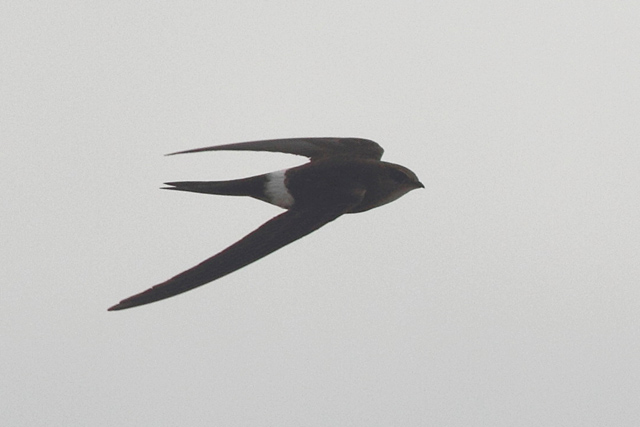
Pacific Swift, Spurn, East Yorkshire (Photo: Ian Smith)
Later that afternoon, the Pacific Swift was relocated over the north Lincolnshire coastline near Sea View Farm, Saltfleetby, until 15:30, when it drifted off once more. Again, it was photographed but it was not seen again by dusk. With many thousands of swifts moving around the Humber both yesterday and again this morning [13th], it really is a lottery predicting when (if) and where it is going to turn up next. Incidentally, you can read more about the Spurn sighting (and see further shots) on the Spurn Bird Observatory website.
While most areas gradually sunk towards the midsummer doldrums, Fair Isle was still cleaning up in the rarity stakes. In addition to last week's skulking River Warbler that was still present on 7th (the island's 17th!), birders there claimed a female Collared Flycatcher trapped and ringed on 9th as well as a brief Roller late on 11th, though the late Ortolan on 10th failed to metamorphose into Britain's first Grey-necked Bunting — particularly galling given that the Germans were enjoying Heligoland's second on the very same day. You can follow the action through the eyes of warden David Parnaby on his blog.

Collared Flycatcher, Fair Isle, Shetland (Photo: David Parnaby)

River Warbler, Fair Isle, Shetland (Photo: David Parnaby)
The notion that Collared Flycatcher is rapidly losing its status as a British 'mega' was further strengthened as spring 2013's fifth individual — this time another male — was found and photographed by the lighthouse at the remote Highland village of Stoer on 12th, though it had moved on by the following morning. What else must get missed in the sparsely covered far-northwestern reaches of Scotland?
An exciting announcement from the Avalon Marshes on 6th revealed that Little Bitterns were once again breeding in the reedbeds at Ham Wall, with both male and female seen. As it transpired, the male was hardly heard during the week and only seen in flight a handful of times — hopefully this is strong evidence that the birds are now feeding young. More details can be found in this article. After such a meagre spring, it was actually a surprisingly good week for rare and scarce herons. Glamorgan's long-staying Purple Heron was again seen at Kenfig on 6th, while an elusive Squacco Heron spent a few days bombing about the ditches and marshes of the Bembridge and Brading area of the Isle of Wight from 8th. A first-summer Night Heron flew up the River Lee in Cork City on 7th, and an adult was at Dunster Beach (Somerset) the following day; we also received news of an adult for two weeks in Northamptonshire in late May and early June. A Cattle Egret flew over Doxey Marshes (Staffs) on 9th, and one of several isolated Great White Egrets was seen at Marloes Mere (Pembrokeshire), where our old favourite, the Glossy Ibis, soldiered on. A Black Stork was seen flying over Pulborough Brooks (W Sussex) on 6th and a White Stork drifted over Bristol the same day. A Crane at Bride (IoM) to 7th was noteworthy.

Great White Egret (and Garganey), Filey Dams YWT, North Yorkshire (Photo: Mark Pearson)
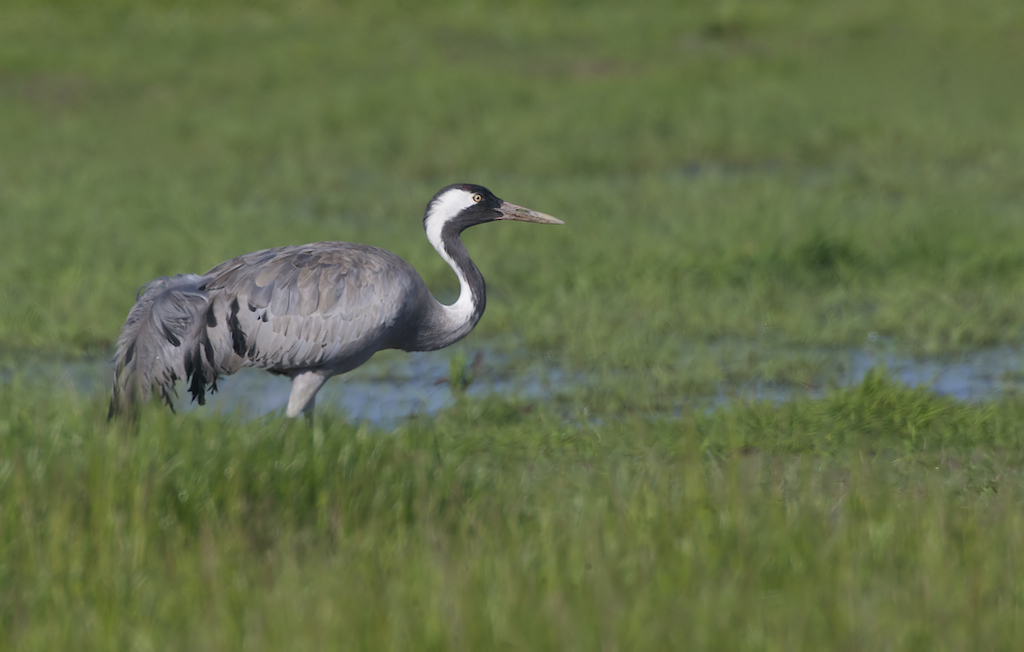
Crane, Glascoe Dubh, Isle of Man (Photo: Sean Gray)
It was the first week since early May that the male Red-footed Falcon was not seen at Lakenheath; compensation was provided in the form of the female continuing to show reasonably well at Ouse Fen (Cambs) to 10th. A rarity in itself is a lingering Black Kite, so a bird near Faversham (Kent) on 8th–12th was well twitched. Others were reported over RAF Waddington (Lincs) on 7th and Guyhirn (Cambs) on 12th. County Donegal's Snowy Owl was again reported from Arranmore Island on 9th, with another on St. Kilda (Outer Hebrides) on 12th. A Montagu's Harrier was at Tacumshin (Wexford).
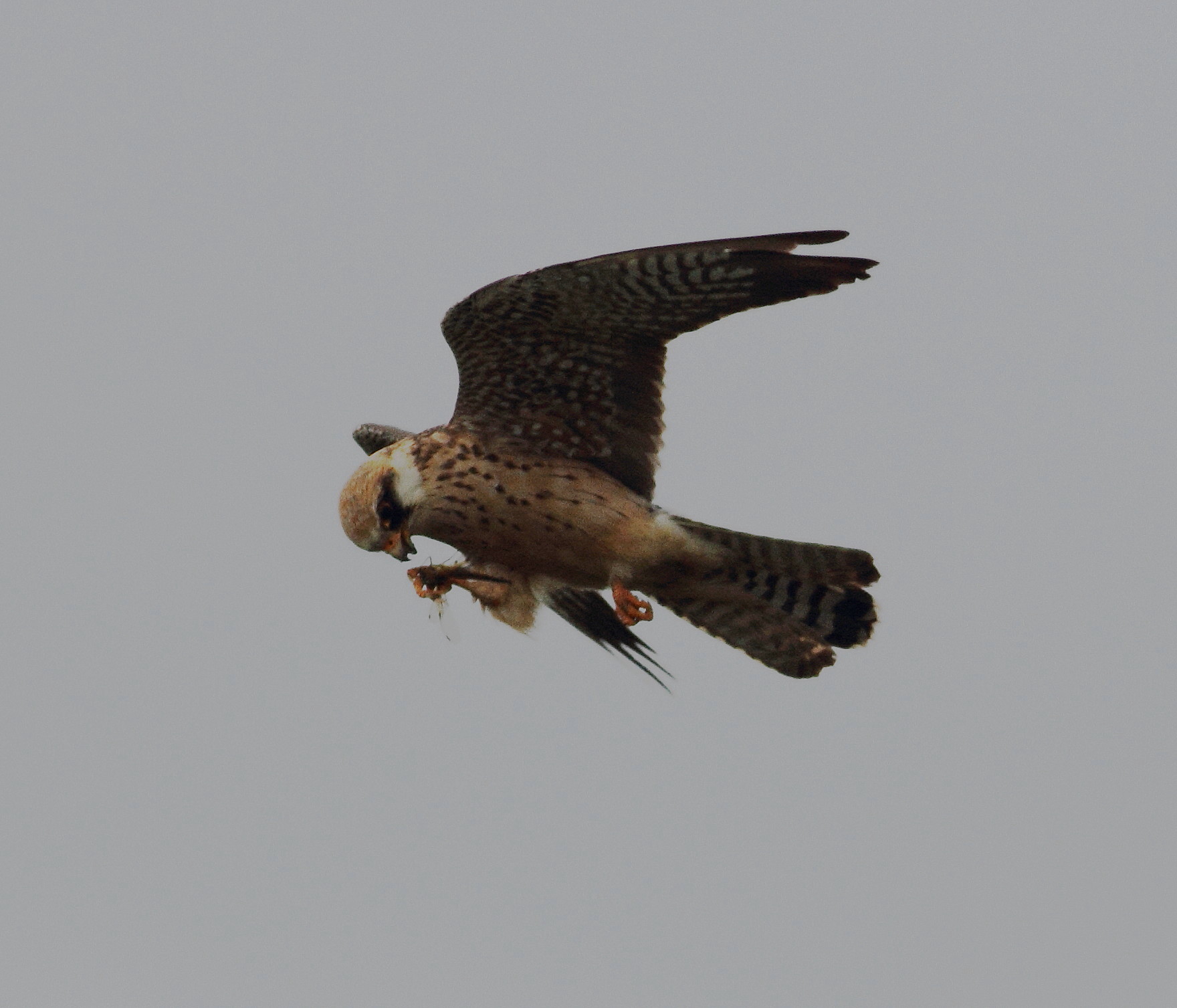
Red-footed Falcon, Ouse Fen RSPB, Cambridgeshire (Photo: Brendan Doe)

Black Kite, Faversham, Kent (Photo: Mike Gould)
A reasonable selection of rare and scarce waders included two American Golden Plovers — a first-summer at Cuckmere Haven (E Sussex) on 11th–12th and a fully breeding-plumaged beauty at Rubha Ardvule, South Uist on the latter date. Three Temminck's Stints (Lincolnshire, Fair Isle and mainland Shetland) were outnumbered by the week's eight Pectoral Sandpipers: birds were in Cornwall, Norfolk (two), Lincolnshire, Northumberland, Aberdeenshire and on North Uist and Orkney. A Buff-breasted Sandpiper was at Blacksod (Mayo) on 11th, a White-rumped Sandpiper was at Findhorn Bay (Moray/Nairn) from 10th and a Spotted Sandpiper was at Workington (Cumbria) on 12th. Red-necked Phalaropes comprised females at Tacumshin on 10th and still in Gloucestershire, and a third at Kilnsea (E Yorks) on 12th.
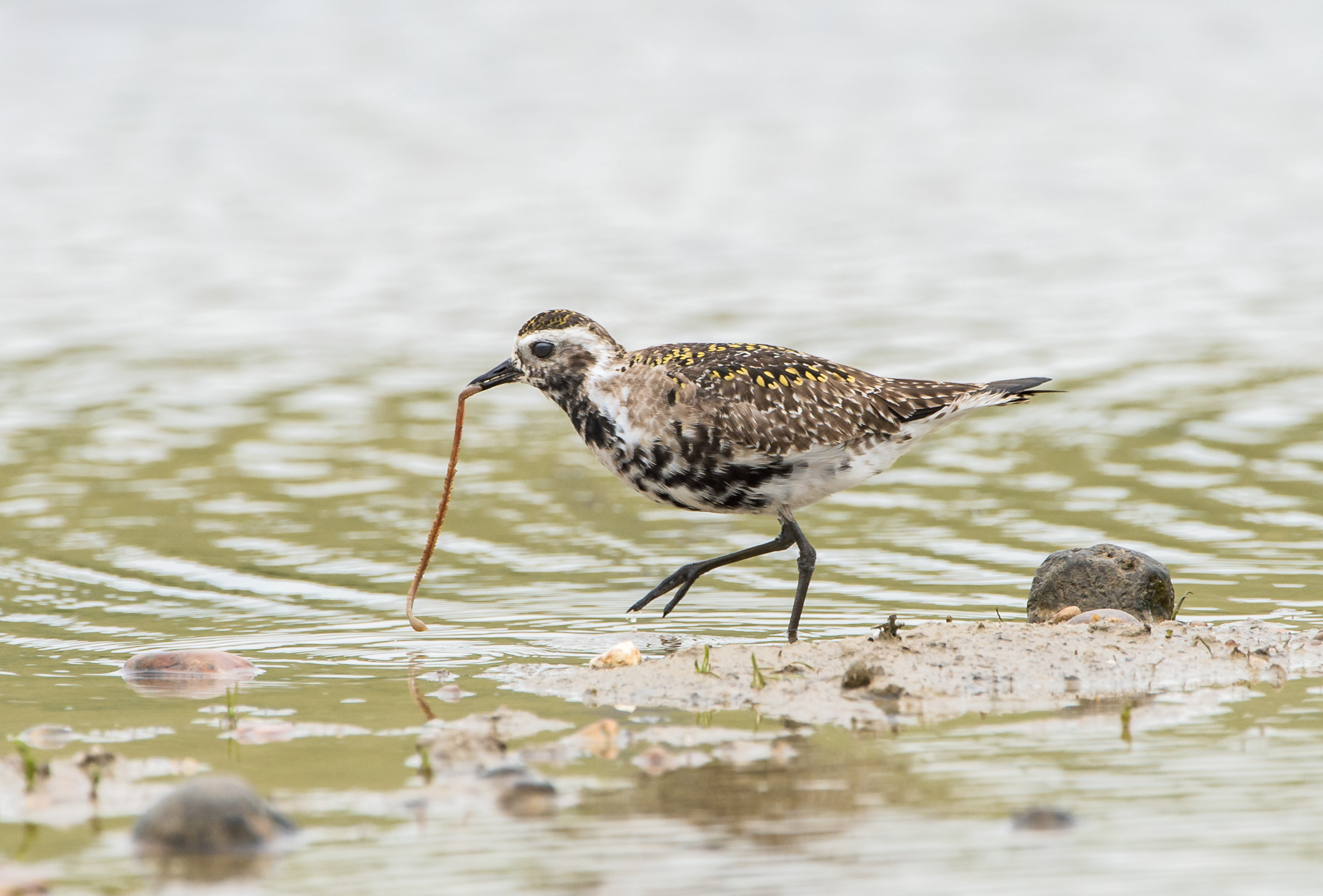
American Golden Plover, Cuckmere Haven, East Sussex (Photo: John Stanton)

Temminck's Stint, Grutness, Mainland, Shetland (Photo: James Wood)
One of the week's highlights was a smart adult Caspian Tern along the south coast. Unbeknown to many local birders, it spent much of the afternoon at Testwood Lakes (Hants) on 9th before flying off during the evening. Though not seen on 10th, it paid a quick 'in-out' visit to Radipole Lake (Dorset) during the morning of 11th, before later being pinned down along The Fleet at West Bexington, where it alternated between the sea and the mere. Unusually for its species, it was still present throughout 12th, but a fleeting Gull-billed Tern at Kelling Water Meadows (Norfolk) on 10th was far less confiding. In Kent, the Bonaparte's Gull occupied Oare Marshes throughout the week, while three Ring-billed Gulls comprised continuing immatures on mainland Shetland, Tiree (Argyll) and in County Down.

Caspian Tern, West Bexington, Dorset (Photo: Steve Carey)
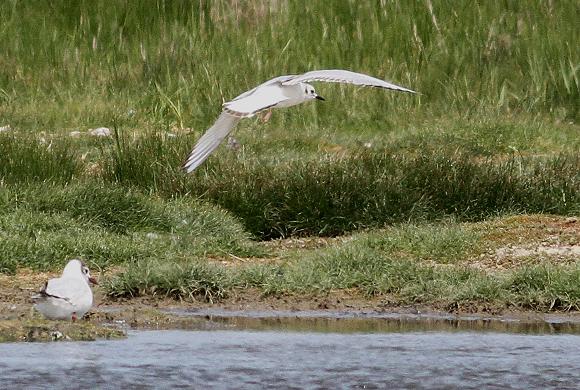
Bonaparte's Gull, Oare Marshes NR, Kent (Photo: Brian Anderson)
Often unfairly overlooked, a Black Duck fresh in at Loch of Hillwell (Shetland) on 11th was an excellent find for the archipelago. Elsewhere, the drake Lesser Scaup remained faithful to St. John's Loch (Highland), the drake Ring-necked Duck lingered at Tophill Low (E Yorks) to 6th and Somerset's Ferruginous Duck could again be found idly floating around Chew Valley Lake on 7th–9th before relocating to Ham Wall on 12th. Both the King Eider and Surf Scoter remained off Aberdeenshire, and an immature drake Surfie was off Inch (Kerry) on 11th.
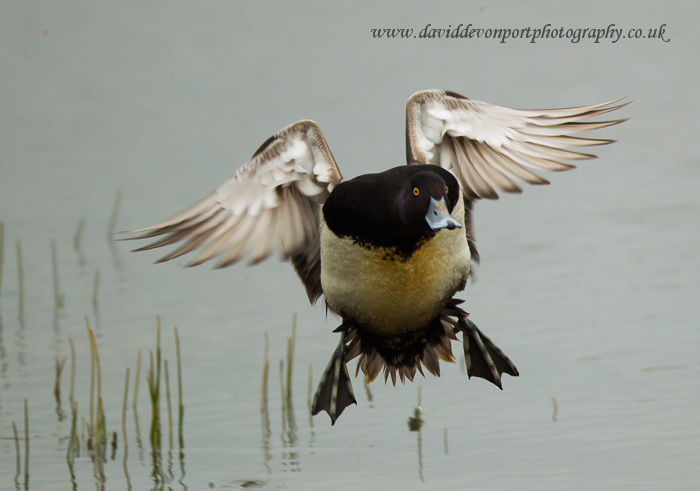
Lesser Scaup, St. John's Loch, Highland (Photo: D Devonport)
In a similar fashion to the county's aforementioned Black Kite, Kent also boasted a lingering Bee-eater at Pegwell Bay this week, which performed well under grey skies there on 8th–10th. Another was heard over Thorpeness (Suffolk) on 6th. Four Hoopoe records came from Pembrokeshire, Dorset, and Essex (2), and Red-rumped Swallows flew through Portland (Dorset) on 7th and Brading Marshes (IoW) on 9th.

Bee-eater, Pegwell Bay, Kent (Photo: Marc Heath)
Also from the south were two Subalpine Warblers: a new female was on the Great Orme (Conwy) on 8th–9th and another was on Fair Isle (Shetland) on 11th. Suffolk Savi's Warblers were still at Lakenheath to 7th and Minsmere on 9th. One of the week's headline passerines was a Paddyfield Warbler showing well on Bardsey Island (Gwynedd) on 6th–7th — this is the fourth for Wales and the third for Bardsey. Just one Icterine Warbler was found, on the Farne Islands (Northumberland) on 8th. By contrast, at least a dozen Marsh Warblers were noted: up to three were at Spurn throughout the week, with Yorkshire records further represented by birds at Flamborough and Filey; notable records away from the east coast included one at Carsington Water (Derbys) on 10th and another singing in the dark near Middleton (Lancs) late that evening.

Subalpine Warbler, Great Orme, Conwy (Photo: Marc Hughes)
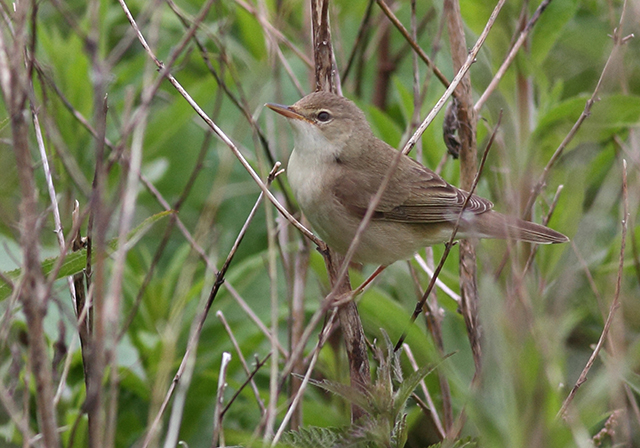
Marsh Warbler, Carsington Water, Derbyshire (Photo: Steve Whiteley)
The Thrush Nightingale was last seen at Sammy's Point (E Yorks) on 6th when it was trapped and ringed. The male White-spotted Bluethroat continued to sing from the reedbed at Cley Marshes (Norfolk) to at least 11th. The week's only Woodchat was at Spurn on 7th, where two of the week's fifteen Red-backed Shrikes were seen. As is typical for early June, the first flush of Rose-coloured Starlings arrived, with finely plumaged birds at the Calf of Man (IoM) on 8th–9th and in Edmonton (London) on the latter date. Eight or so Common Rosefinches were dotted around the county and included a singing first-summer at Crosshill (Ayrshire) on 10th–12th, while a Waxwing was in Beadnell (Northumberland) on 12th.

Woodchat Shrike, Spurn, East Yorkshire (Photo: Simon Smethurst)

Red-backed Shrike, Geosetter, Mainland, Shetland (Photo: James Wood)

Rose-coloured Starling, Edmonton, Greater London (Photo: James Newman)

Waxwing, Beadnell (village), Northumberland (Photo: Gary Woodburn)
Leaving one of the highlights of the week until last, a male Black-headed Bunting was singing on Compton Down (IoW) on 9th–11th.

Black-headed Bunting, Freshwater, Isle of Wight (Photo: Derek Hale)
The big question on many birders' lips for the coming week is whether the Pacific Swift will linger long enough anywhere to render itself gettable. However, with remarkable news filtering out that two Cape Gulls have been seen in Portugal in recent weeks, and with Grey-headed Gulls in both Spain and Italy, perhaps we should be looking forward to the annual northward influx of Yellow-legged Gulls. Could one of these cosmic sub-Saharan species be primed to find its way to our shores in 2013? What a story that would be — watch this space!
Photo of the Week

Puffin, Lunga, Argyll (Photo: Robert Askew)
Robert Askew started uploading images to BirdGuides in 2007, since when he has had over two dozen Notable Images and two Photos of the Week, the latter only two weeks apart in 2009! It's therefore our pleasure to top up his tally this week with his intimate close-up of a pair of Puffins taken on the Scottish island of Lunga. Considering the popularity of Puffins as a photographic subject, it's perhaps surprising that we've had only one PotW featuring this species since 2009. One of the challenges for such a well-photographed species, though, is that most shots have been done so many times. Robert's shot is well lit and well exposed (it's always difficult to retain good shadow and highlight details with this species), but that certainly wouldn't be enough to create an image that would stand out from the crowd. Robert has also timed his shot precisely as the birds touched bills and composed his image with the bill-tips on the centre-line to make the most of this, but that's still not enough for a winning image. What's really special about this shot is something only rarely seen in bird images, namely the intimate eye contact between these two birds. Despite the proximity of at least one human, it's clear that these Puffins are sharing a moment in which only one thing matters. Thankfully, Robert captured that touching moment for us all to enjoy.
Other Notable Photos

Arctic Tern, Farne Islands, Northumberland (Photo: Jamie MacArthur)
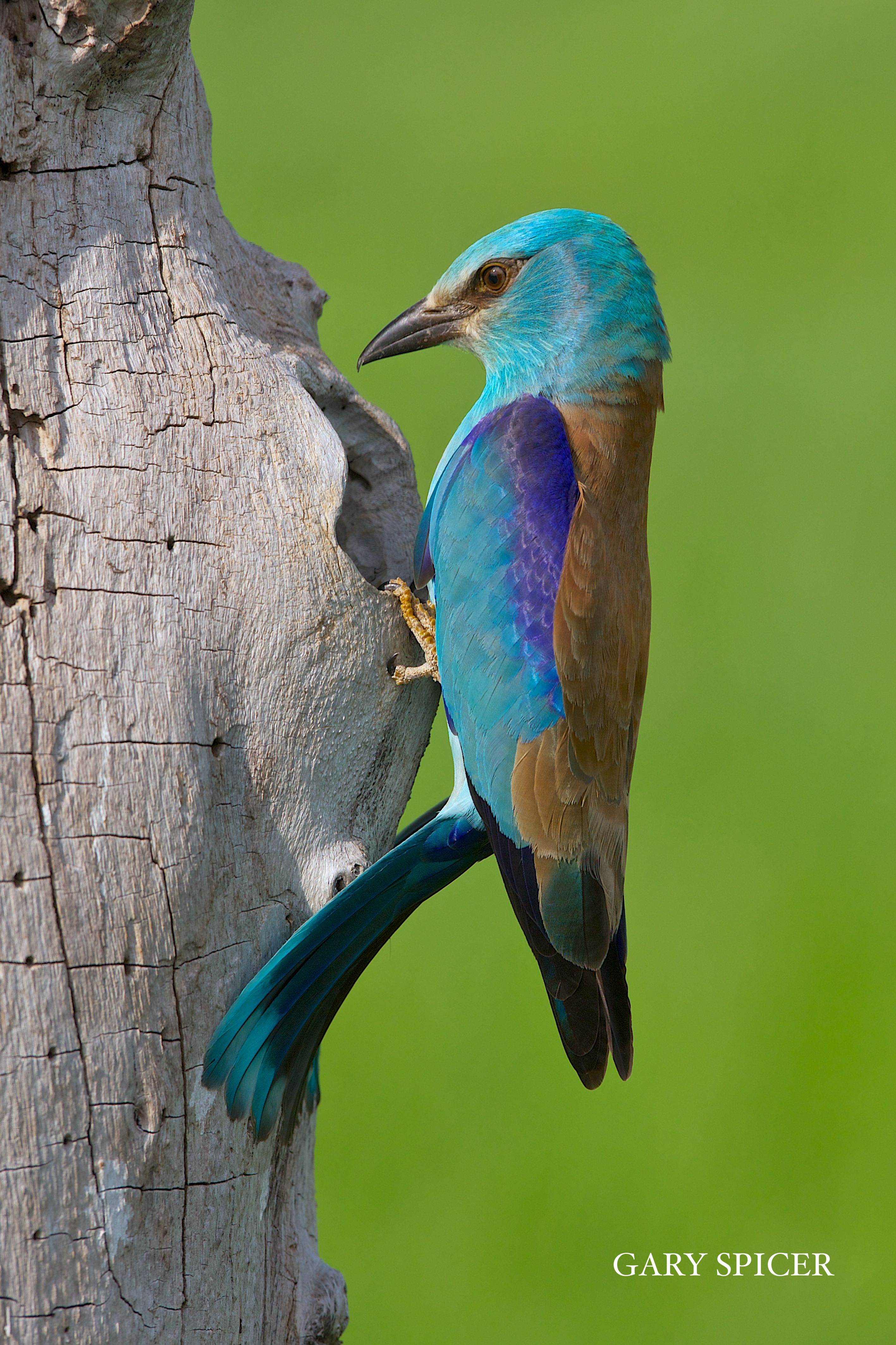
Roller, Hungary (Photo: Gary Spicer)

Razorbill, Bempton Cliffs RSPB, East Yorkshire (Photo: Steve Race)

Red-footed Falcon, Ouse Fen RSPB, Cambridgeshire (Photo: Brian Harrison)

Woodcock, undisclosed site, North Yorkshire (Photo: Andy Shepherd)

Sedge Warbler, Newton Pool, Northumberland (Photo: Gary Woodburn)

Cuckoo, Anglezark Reservoir, Lancashire (Photo: David Cookson)

Spotted Flycatcher, undisclosed site, Somerset & Bristol (Photo: Steve Hatch)

Ferruginous Duck, Hungary (Photo: Dave Williams)

Red-necked Phalarope, Iceland (Photo: Darran Rickards)

House Martin, Exeter, Devon (Photo: Charlie Fleming)

Sanderling, Grutness Voe, Mainland, Shetland (Photo: James Wood)

Magpie, undisclosed site, Lancashire (Photo: Austin Thomas)

Meadow Pipit, Blue House Farm EWT, Essex (Photo: Thomas Harris)


